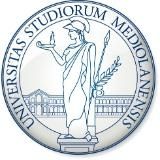Glioblastomas (GBMs), the most frequent brain tumours, are highly invasive and their prognosis is still poor despite the use of combination treatment. MG624 is a 4-oxystilbene derivative that is active on α7- and α9-containing neuronal nicotinic acetylcholine receptor (nAChR) subtypes. Hybridisation of MG624 with a non-nicotinic resveratrol-derived pro-oxidant mitocan has led to two novel compounds (StN-4 and StN-8) that are more potent than MG624 in reducing the viability of GBM cells, but less potent in reducing the viability of mouse astrocytes. Functional analysis of their activity on α7 receptors showed that StN-4 is a silent agonist, whereas StN-8 is a full antagonist, and neither alters intracellular [Ca2+] levels when acutely applied to U87MG cells. After 72 h of exposure, both compounds decreased U87MG cell proliferation, and pAKT and oxphos ATP levels, but only StN-4 led to a significant accumulation of cells in phase G1/G0 and increased apoptosis. One hour of exposure to either compound also decreased the mitochondrial and cytoplasmic ATP production of U87MG cells, and this was not paralleled by any increase in the production of reactive oxygen species. Knocking down the α9 subunit (which is expressed at relatively high levels in U87MG cells) decreased the potency of the effects of both compounds on cell viability, but cell proliferation, ATP production, pAKT levels were unaffected by the presence of the noncell-permeable α7/α9-selective antagonist αBungarotoxin. These last findings suggest that the anti-tumoral effects of StN-4 and StN-8 on GBM cells are not only due to their action on nAChRs, but also to other non-nicotinic mechanisms.






